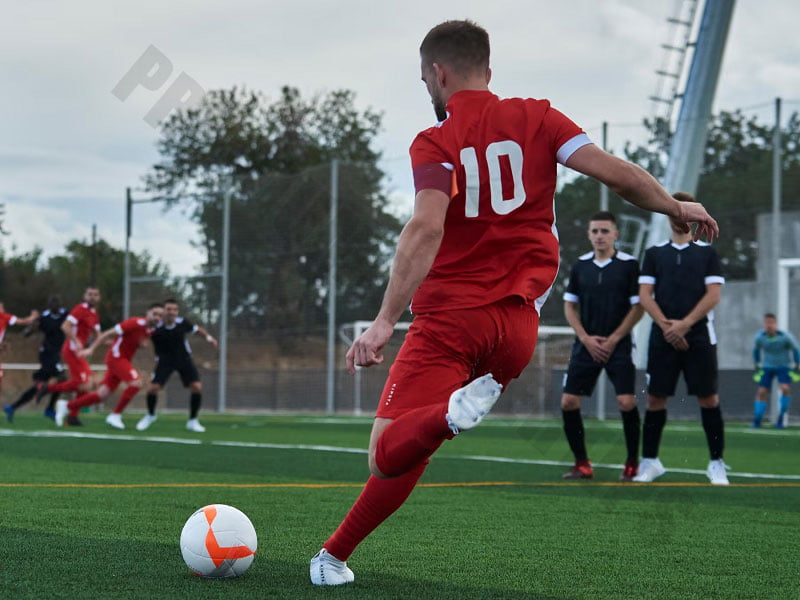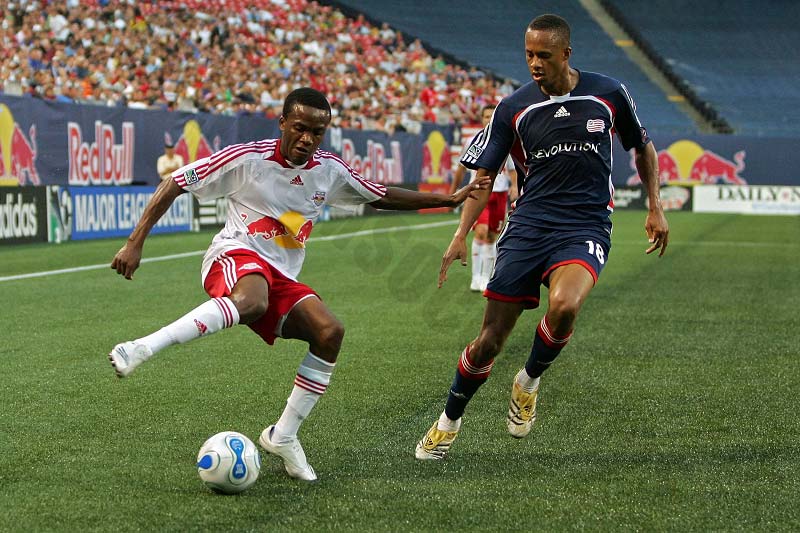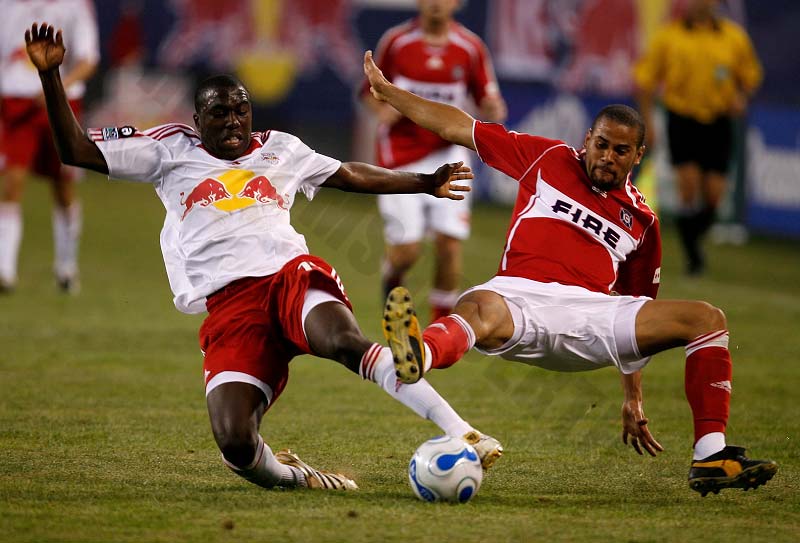What is the easiest position in football? Top 6 easiest position in football
In football, a player’s position on the pitch plays an important role in creating balance and efficiency for the team. Each position requires unique skills and tasks, helping the team develop its full strength. However, there are positions that are considered easier than others, both in terms of pressure and skill requirements. In this article, Premiumsoccertips.net will learn about the easiest position in football and what factors make it easy.

What is the easiest position in football?
In football, each position has its own tasks and responsibilities and requires different skills. Therefore, stating that a particular position is the easiest might not be entirely accurate, as each position can be easier or more difficult depending on the player and their playing style.
However, the goalkeeper position can be seen as a unique position in football. Although the goalkeeper has the important responsibility of defending the goal and preventing the opponent from scoring, they do not run as much as players in midfield or attacking positions. Nonetheless, goalkeepers also need quick reflexes and good ball-handling skills.
Additionally, fullback positions (side defenders) may be considered slightly easier than other positions because they mainly focus on defending and supporting counterattacks. However, this also depends on the team’s tactics and the player’s abilities.
Top 6 easiest position in football
1. Central Midfielder
In both defensive and offensive roles, the central midfielder is one of the most challenging positions to play, requiring a bit of everything alongside a deep understanding of tactics.
There are three types of central midfielders: Defensive, attacking, and the standard central midfielder, which combines both roles.
As a standard central midfielder, you need to have an all-around ability and proficiency in all aspects of the game, with passing ability, endurance/work rate, and ball control being important factors. Sharp defensive awareness is also required.
When emphasizing attack, players need to organize attacks while reading and understanding the play.
You will need top-notch dribbling ability similar to an inverted winger but require a perfect first touch to navigate the more crowded central area of the field. A good shot and passing range are also encouraged.

In defense, essentially, you need to possess all the qualities of a good center-back while maintaining excellent passing ability. However, height and physicality are less important for a central midfielder, while more emphasis is placed on endurance and work rate.
Overall, the central midfielder position is relatively the most challenging, regardless of your tasks.
2. Goalkeeper
At first glance, the goalkeeper may seem the easiest to understand. There are very few tactical nuances required, and someone who has never shown interest in the sport can become a natural-born goalkeeper.
It’s unlike other positions. Essentially, the most important factors to consider are hand-eye coordination, leadership ability, and reflexes.
While this might suggest that goalkeeper is the easiest position, it is actually one of the most challenging.
It’s an isolated role and often the least thanked on the pitch. You might play absolutely blind, making save after save, but lack focus and make a subtle mistake, and that is all anyone will remember.
Playing in goal is almost like playing a different sport compared to outfield players. The buck stops with you as the last line of defense.
While reflexes, hand-eye coordination, and leadership are all skills one can learn outside of football, understanding proper positioning can take many years and is essential for success.
You might have the best reflexes and hand-eye coordination in the world, but if you don’t know how to position yourself, you won’t be saving anything.
Finally, understanding the mindset of opposing forwards is crucial to gaining an advantage in one-on-one situations.
Knowing where they’ll place the ball, how they’ll shoot, and calculating the trajectory in a split second before the shot is a skill every good goalkeeper possesses and may take thousands of hours of playing football to comprehend if you don’t have prior on-field experience.
By far the most pressure-filled role, goalkeeper is a role that is easy to grasp the basics but extremely hard to master.
3. Winger
Enhance the attacking attributes of a full-back position and eliminate most defensive duties, and you have the basics of a winger.
Essentially, wingers provide width to attacks and adhere to two distinct prototypes, each requiring different skill sets.
To start, the classic winger will stand wide and aim to cross the ball into the forward, or play a more central role when the ball is on the opposite wing to try to score.
It’s the least morale-influencing position on the field, as long as you understand the basics I’ve outlined and know how to hold your ground, you can handle it tactically.
Your skill will tell the story, but at the same time, you can become an effective classic winger without exceptional dribbling skills.
Since your main job is to run down the wing and cross the ball in, speed is often the most important attribute. Naturally, next comes crossing ability; if you have speed and good crossing, you can do well on the wing.
Things get a little more complex if you play the inverted winger position. While in most of football’s history, the side you play on is based on your stronger foot, the inverted winger will play on his weaker side to cut inside, allowing them opportunities to attack the goal from the edge of the box.
As an inverted winger, good dribbling ability becomes much more important because you can’t simply find space and launch the ball into dangerous areas. To cross with your stronger foot, you have to shift the ball onto your stronger foot, giving defenders time to catch up.
Classic wingers are a much easier role to choose from and, in my opinion, is one of the easiest roles to play, requiring speed and a good cross. Inverted wingers represent a much more challenging alternative, requiring excellent dribbling, shooting, and all-around ball-handling ability.
4. Full-Back
When it comes to the easiest position, the typical answer is right-back. In school football, you would often find one of the weaker players stuck in the right-back position.
The left-back role is naturally considered harder due to left-footed players being rarer, and you usually want your stronger foot on the side you play full-back, so for most people, right-back will be much easier.
However, right-back is the answer most people give when they think of the easiest position. However, while that may have been true in the early days of football, it is now a much more detailed and demanding role.
If you stick to the basics, operate on the right side of the defense, and retreat, your job is very simple: prevent wingers from getting past you.

You need good defensive awareness and reading of the game. Understanding how to stop each winger you face is not an easy task. Knowing when to join the attack and when not to is another defining skill. Overlapping or stepping up at the wrong time can leave you out of position and your team’s flank completely exposed.
But you don’t need to be an attacking full-back, the most important thing is to perform your defensive duties, making the right-back, at its core, a slightly more technical version of a center-back.
Finally, speed is often important for this role, but only in advanced systems. Agility means you are capable of pushing forward, as you will have the speed to drop back to thwart attacks if your team loses the ball.
5. Center-Back
Center-backs need to excel both physically and mentally to perform well. While technical and dribbling abilities are much less important, you need to read the game exceptionally well, understand when to dispossess attackers, and when to press them.
Focus is crucial, and of course knowing when to tackle and how to perform tackles without fouling the attacker.
Add to that the importance of having an imposing physical presence and you have a very challenging position to take on.
But technically, very little ability is needed. If we are talking about the pinnacle of football, technical ability is largely needed, but an intimidating defender can be useless on the ball; take Harry Maguire, for example.
6. Striker
Goals are considered the best part of football by most, and scoring goals creates an irreplaceable feeling. But from a tactical point of view and minimum skill perspective, this is considered the easiest role.
Yes, a good striker is indispensable to a winning team, but the skills you need to excel are much fewer than even a classic attacking midfielder.
Two things matter most when playing up front: positioning and finishing.
Positioning refers to knowing where to find yourself in space to shoot, and finishing refers to your ability to score, often from closer distances, ‘finishing’ attacking movements.
Of course, many additional attributes, such as height, speed, strength, dribbling skills, and even passing ability, will help you become a better striker, but even at the highest level. Strikers with no special attributes other than positioning and finishing can still excel on the biggest stages.
You don’t need to worry about defending or running unless the ball comes close to you. All that matters is that you put the ball in the net when called upon.
In terms of what you need to succeed, strikers don’t need to run much and rely on only 2 main attributes. Not only is being a finisher encouraged, but it isn’t necessary for success. Just ask Gary Lineker.
Conclude
Although there are easiest position in football that are considered easier than other positions in football, none are really easy. Each position requires the effort, focus and skills of each player to fulfill his role in the best way. Understanding the requirements and responsibilities of each position will help players and coaches optimize team performance, while bringing joy and flourishing in football.
See also: Top 7 hardest position in soccer that you should know








